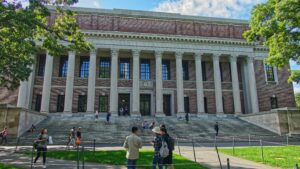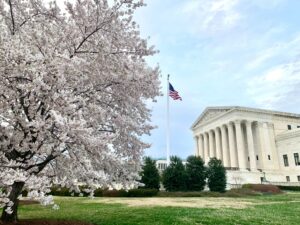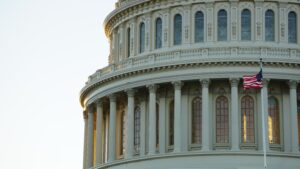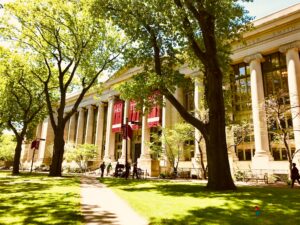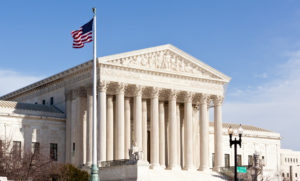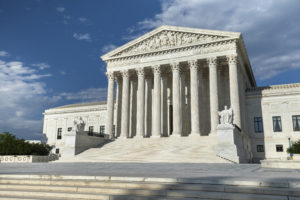The Hill: Soon to be blockbuster cases from the Supreme Court
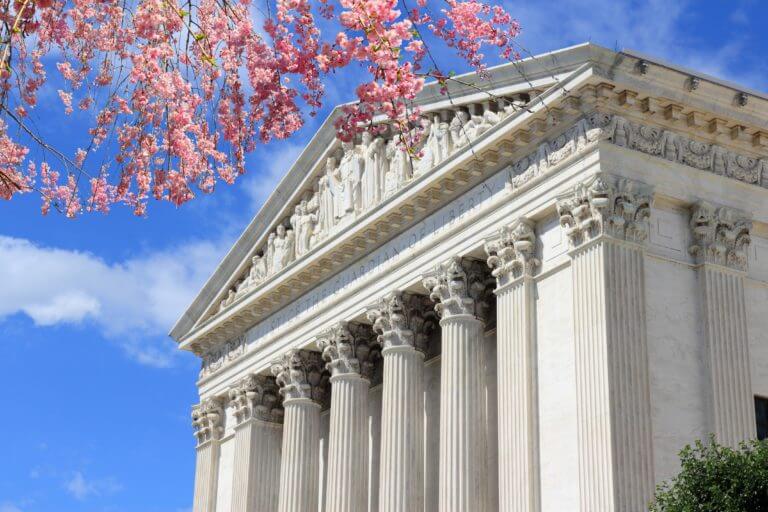
The Supreme Court convenes today for the start of its October 2021 term, in person for the first time since March 2020, when the pandemic drove the justices to — literally — phone it in. This year, the court has some blockbuster cases, both on its docket and in the cert petition pipeline. Here are a few cases to put on your radar:
Dobbs v. Jackson Women’s Health Organization
In 2019, the Supreme Court granted a property owner a victory in Knick v. Scott Township. In doing so, the court overruled a 1985 precedent called Williamson County v. Hamilton Bank, which held that property owners couldn’t sue in federal court for a violation of the Takings Clause of the Fifth Amendment to the Constitution. The underlying issue in Knick was whether the owner of rural land in northern Pennsylvania could go to federal court when the town said she must allow strangers onto her property so they could search for putative colonial gravesites.
But the immediate issue at hand was when the court should correct its past mistakes. In Knick, the court reversed Williamson County, leading to a furious debate between the majority opinion and the dissenters over when the court should abandon stare decisis in order to overrule mistaken precedent. Why so furious? Because the court was anticipating the arrival of a giant elephant in the room. With more fanfare than any circus, that elephant has now arrived, and its name is Dobbs v. Jackson Women’s Health Organization. Today, the Alabama Attorney General is demanding that the court overturn Roe v. Wade.
Glorified and vilified, Roe has been the touchstone for a half-century’s worth of debate over the meaning of constitutional jurisprudence and the impact of the court’s decisions on societal norms — and vice versa. The debate has been animated not only by the social revolution the case ushered but also by the uneasy admission by even the case’s staunchest defenders that the constitutional rationale for former Justice Harry Blackmun’s decision did not match its importance. But was it so weak that the doctrine of stare decisis should be abandoned in Dobbs? Or should the court find a new constitutional rationale for the case to preserve the sociological status quo? Expect rhetorical fireworks in the courtroom and around the nation on Dec. 1 when the court tees up the case for oral argument.
Austin v. Reagan National Advertising
The First Amendment to the United States Constitution says that “Congress shall make no law … abridging the freedom of speech, or of the press.” After the Civil War, the First Amendment was applied to the states. In 1980, the Supreme Court found that laws affecting so-called “commercial speech” should be given more leeway. Thus, “no law” meant “some laws are okay” for commercial speech. However, in 2015, in a dispute over an Arizona town’s ability to regulate signs for church services, the court held that signs — commercial or otherwise — could not be regulated based on their content.
In Austin v. Reagan National Advertising, the court will decide whether a regulation banning electronic signs, unless the sign is located next to the business it advertises, is a prohibited content-based sign code. In the Arizona case, Justice Clarence Thomas agreed with the result but added in a concurrence that there is no “philosophical or historical basis for asserting that commercial speech is of lower value than noncommercial speech.” Austin gives the court an opportunity to reaffirm that any sign ordinance requiring an inquiry into the sign’s message is unconstitutional and that there is no basis for any First Amendment exception for commercial speech. As Pacific Legal Foundation’s friend of the court brief puts it, “Although commercial speech has been treated differently — and badly — in some of this Court’s rulings, modern First Amendment doctrine should place it on an equal footing with other protected speech.”
American Hospital Association v. Becerra
Congress has a habit of passing vague laws, leaving it to federal agencies to fill in the blanks with rulemaking and statutory interpretations. In 1984, in Chevron v. Natural Resources Defense Council, the Supreme Court became fed up with the habit of some federal courts to substitute their policy preferences for those of the agencies under the guise of statutory interpretation. There, the court adopted the Chevron doctrine and said that if the statute isn’t clear, the courts should defer to an agency’s interpretation. That may have cured the problem of runaway courts, but it led to another: runaway federal agencies. Over the ensuing years, an increasing number of scholars have concluded that Chevron was either wrong or badly flawed in its execution.
The nominal issue in American Hospital Association v Becerra is whether the Federal Court of Appeals for the D.C. Circuit properly applied Chevron when reviewing the regulation of Medicare reimbursement rates for certain outpatient drugs. But the more fundamental question — raised in briefs such as Pacific Legal Foundation’s — is whether it is time to abandon the Chevron doctrine altogether. The argument is set for Nov. 30 and will be watched closely by those contemplating the future of administrative law. Perhaps just as significantly, many will be watching the argument intently for signs on how receptive the court may be to overturning other precedents — such as Roe v. Wade that will be on the docket the following day in Dobbs.
Also in play are a host of cases waiting in line for court review. Among these cert petitions are a challenge to Harvard’s admissions practices that discriminate against Asian American applicants and various challenges to state eviction moratoria, vaccine mandates and other COVID-19 orders. Likewise, with the court’s growing willingness to accept property rights cases, Pacific Legal Foundation attorneys soon will ask the court to take up cases from North Carolina and California where property owners were either denied the basic right to use their land without compensation or were heavily fined for the innocent and harmless use of their land.
The Supreme Court always surprises, delights and disappoints. For more on what to expect, watch “The Consequential Cases in the Supreme Court’s 2021-2022 Term Including New Cases Added After the Court’s Long Conference,” where attorneys Noel Francisco, Tom Goldstein, William Jay and Anastasia Boden held their own court on the upcoming term.
This op-ed was originally published by The Hill on October 4, 2021.



